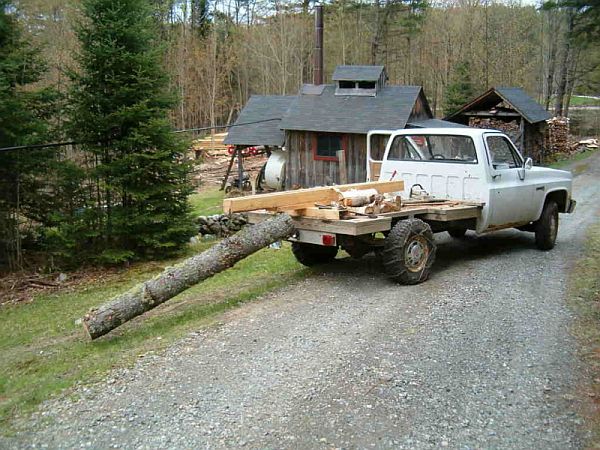From Professor Gene Wengert, forum technical advisor:
The purpose of stacking lumber is to hold the lumber flat during drying, resisting any tendency to warp, and to allow dry air to move through the pile so that water can be evaporated.
Lumber is stacked in layers, with the same thickness of lumber in a layer. Lumber is seldom separated by length and is almost never sorted by width. In other words, within a layer, all widths and lengths will be found. However, to achieve flat lumber, it is important that the edge pieces of each layer be the longest lumber being stacked. This may require, when stacking, that a few long pieces are set aside and then used for layers where no long pieces are available.
The individual layers are separated by spacers called stickers. Any species can be used, although a denser species is stronger and resists breakage better. Stickers are almost always 3/4” thick (dry measurement). The width is usually 1-1/4 to 1-1/2”. The length is typically 4 feet to 6 feet (which is the width of a pile). Oftentimes, the pile width is determined by the weight limits of the forklift. Some people use stickers with grooves running lengthwise so that the contact area between the sticker and lumber is lessened and hopefully drying will occur in this contact area.
Within a layer, the individual pieces are stacked tightly edge to edge, with the edge piece being pulled out a bit, as needed, leaving a gap, so that the edges of the pile look neat and tidy and each layer has the same overall width.
Stickers are most often spaced 24” apart. If the stickers are aligned perfectly, one above the other, this spacing will control warping. Closer spacing allows more sloppiness in alignment without affecting warp. When mixed lengths of lumber are in the same pile, it is necessary to have stickers spaced 12” apart at the ends so that all pieces of lumber have their ends adequately supported. That is, in a pack of 12’ lumber, if there are 11’ pieces, then there needs to be a sticker at the 11’ mark to catch the ends of the 11’ length pieces.
When stacking pieces that are shorter than the longest pieces, there are two options. One is to stack the ends of every piece at one end all the time. This means that the other end of the pack will have different lengths and gaps and so on. This is called even ending. The other option is to stack short pieces, alternating the ends of the pieces. That is, the first short piece has its end even to one end of the stack and the next short piece has its end even to the other end of the stack. This is called box piling. There has never been any evidence that one method is better than another.
To allow forklift access, most stacks are separated from each other by 4x4s (3.5” x 3.5”) that are positioned exactly under a column of stickers. The 4x4s are called bolsters, crossouts, and other local names. If flat lumber is not important, 4x4s can be at every other sticker column; otherwise, every column. Some operations use treated pine 4x4s for longer life. Some people make three 1/2” grooves down the length of the 4x4 so that there is some air flow and drying where the 4x4 contacts the lumber.
Step 1, Assessing the Raw Material
Step 2, Stacking
Step 3A, Measuring Moisture Content
Step 3B, Sample Boards
